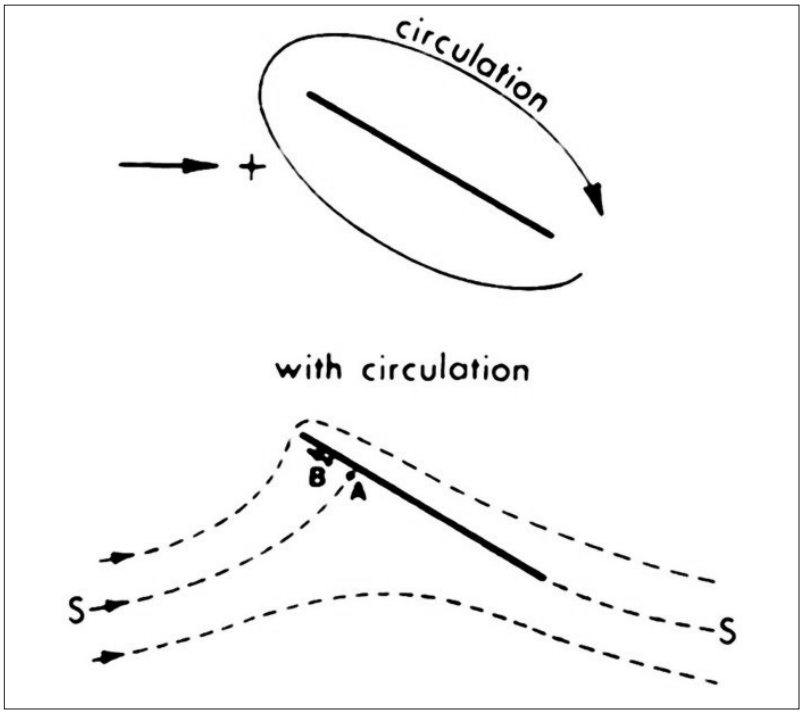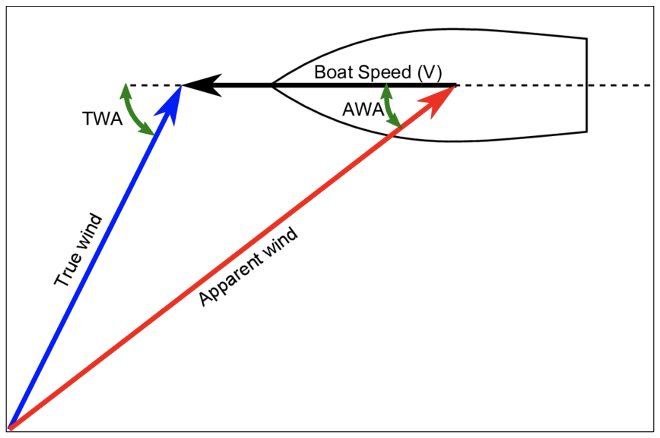Introduction
Sailing, as ancient as civilization, has transformed from a means of exploration and trade to a sophisticated sport defined by its reliance on aerodynamics and technological innovation. The quest for speed on the water, propelled by the wind alone, is a complex amalgam of physics, material science, aerodynamics and meteorology, with modern hydro-foiling sailboats embodying the pinnacle of this intricate interplay. This dance of forces, where the invisible push of the wind meets the tangible resistance of water, results in the graceful motion of a boat.
At its basic level a sailboat is subjected to various forces that govern its movement. Aerodynamic forces arise from the complex interaction of the sails with the wind, while hydrodynamic forces come into play with the hull, keel, and rudder in the denser fluid, water. These forces must be harnessed and optimized for velocity made good (VMG), the component of the boat’s velocity in the direction of the chosen course. Unlike engines which push directly backward, sails generate force perpendicular to the wind direction, which, combined with the resistance provided by the hull, rudder, and keel, propels the boat forward. Though the sails do not drive the boat directly into the wind but rather at some angle which creates the need to manage and optimize sail efficiency when making way at best VMG.
Additionally, the concept and understanding of apparent wind is fundamental as it is the wind that sailors feel and the boat’s instruments sense; it is a composite of the true wind (TWA) and the wind created by the boat's own forward motion (AWA) (Figure 1). As the boat accelerates, the apparent wind increases in velocity and veers increasingly forward than the true wind, which necessitates continuous adjustments to the sail's orientation and shape. It is this dynamic interplay between a variable true wind and the vessel's induced wind that determines the apparent wind direction and force, thereby influencing the sail's optimum trim and the boat's course. Mastery of apparent wind is what distinguishes champion sailors, allowing them to extract maximum energy from the wind, propelling the boat efficiently at various angles and in varying conditions.
This paper delves into the core of sailboat performance, focusing on the optimization of sail trim angles and design configurations—a subject rich in the history of sailing. At the heart of the challenge to design racing sailboats lies a deceptively simple question: Why do most sailboats use two sails rather than one larger sail? This query does not stand in isolation; it is woven into the larger fabric of understanding how sails interact with the wind and with each other to maximize efficiency and speed. The interplay between the mainsail and the foresail (jib)—the two sails commonly employed in a vast array of sailboats—appears to be not just a matter of tradition but of aerodynamic synergy.
The precise dynamics of this aerodynamic interaction have remained elusive, with hypotheses often outpacing verifiable data. As a senior aerospace engineering student deeply immersed in the world of sailing and serving as the vice commodore of the Rutgers University sailing club, I approach this inquiry with both a scholarly perspective and a personal passion, where a deep appreciation of every controllable element is crucial for competitive success. It is with this blend of practical experience and academic curiosity that this research is undertaken, applying computational fluid dynamics to explore the nuanced interactions of sails.
In the pursuit of understanding sail dynamics, it is crucial to dispel a common myth: that the air traveling over the sail’s leeward side, the side away from the wind, must move faster due to a greater distance covered. This myth is based in the assumption that the flow over either side of the sail needs to arrive at the trailing edge simultaneously. The air on the leeward side does flow faster, but not because of the need to travel a longer path; it simply reaches the trailing edge ahead of its windward counterpart. This myth is demonstratably incorrect, as even a flat airfoil with equal distance on windward and leeward sides can generate lift when angled into the wind, albeit with a large component of drag (Figure 2). Lift is fundamentally governed by Bernoulli's principle, which relates velocity and pressure (equation 1), stating that as flow velocity increases, pressure decreases [2]. Hence, on the sail's leeward side, where air travels more rapidly, pressure drops, while on the windward side, the slower air retains a higher pressure. It is this contrast in pressure that generates the lifting force. The pressing question, then, is not about the speed disparity alone but about the underlying reasons for the differential flow behavior between the leeward and windward sides of the sail.
Figure 3: Flow Field without Circulation. [4]
Figure 4: The Kutta Condition and Circulation. [4]
Figure 5 demonstrates the effects of sail angle on airflow. Maintaining the correct angle of attack (AoA) and airflow attachment is essential; if the angle is too steep, the airflow separates, causing a stall. Conversely, when the angle is too shallow, the sail luffs, where it begins to flutter due to insufficient pressure differential required to maintain shape, so undermining the sail's effectiveness and the boat's propulsion.
In sum, the aerodynamics of sailing are governed by pressures resulting from airflow speeds around the sail, the adjustment of these flows is a result of the interaction between circulatory and non-circulatory flows to satisfy the Kutta condition [2]. These principles not only explain how a single sail works but also set the stage for analyzing the more complex interactions between multiple sails on a vessel.
Figure 1: Wind Vectors. [1]
Figure 2: Flat Airfoil Lift [3]
In Figure 3, we observe the airflow around a flat plate without circulation. The streamlines bend around the object, but there's no mechanism to ensure smooth airflow exit at the trailing edge, thus failing to satisfy the Kutta condition, which is crucial for efficient lift generation. The Kutta condition requires that air exits the sail's trailing edge smoothly, with equal velocities and pressures on both sides to facilitate lift [2].
Figure 4 introduces the phenomenon of circulation into the equation, superimposing a rotating flow on the original pattern [2]. This additional circulation complements the non-circulatory flow over the sail's leeward side and opposes it on the windward side. Consequently, the leeward airflow accelerates, and the windward side decelerates. Such modification to the flow field ensures that the Kutta condition is satisfied at the trailing edge or leech of the sail. The result is a pressure differential—lower on the leeward side and higher on the windward side—enabling the flexible sail to maintain its cambered shape and generate the necessary lift for propulsion.
Investigations into the aerodynamics of sails have advanced through the examination of pressure variations at diverse angles of attack. Generally, a steeper angle of attack amplifies lift due to the greater circulation needed to meet the Kutta condition. Nevertheless, should the boundary layer disengage too early, the sail experiences a stall, significantly diminishing lift while escalating drag. Moreover, a pronounced increase in pressure may cause the boundary layer to expand and potentially detach from the sail's surface. At steep angles, low pressure near the leading edge gives way to increasing pressure towards the trailing edge. This pressure gradient intensifies with the angle of attack, heightening the risk of flow separation.
Figure 5: Sail Streamlines (after Marchaj [5])
With this mechanistic foundation now established the next sections of this paper will dissect the outcomes of fluid dynamic simulations, shedding light on the intricate interaction between sails and wind. By employing ANSYS Fluent, this research simulates the aerodynamic behavior of sails in two configurations: the conventional two-sail setup and a hypothetical single sail of equivalent combined sail area. The analysis considered a 2D sail cross-section derived from the J/105 class—boats familiar from personal racing—to uncover the aerodynamic interrelations at play. This approach is grounded in the reality of racing and the pursuit of tangible improvements in sailboat design and strategy, making it highly relevant to sailors and designers alike.
This paper aims to contribute a data driven perspective to a field often led by intuition and experience, bridging the gap between sailor's lore and the rigorous principles of aerodynamics. The findings are expected to challenge prevailing theories and aim to provide practical insights that could have implications far beyond the racecourses of Rutgers, by influencing both sail design and the tactics of competitive sailors.




